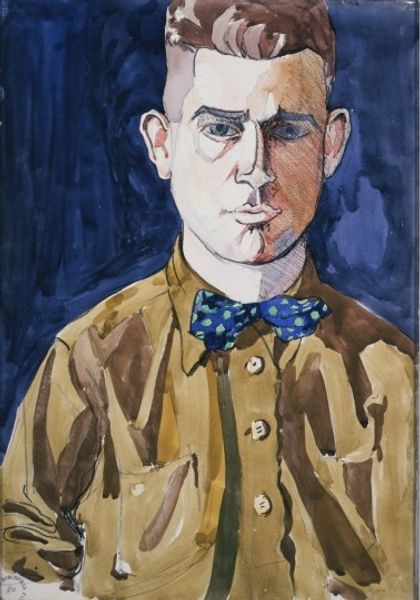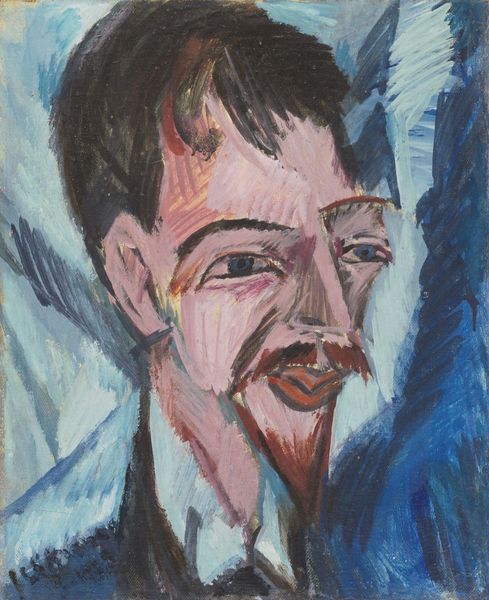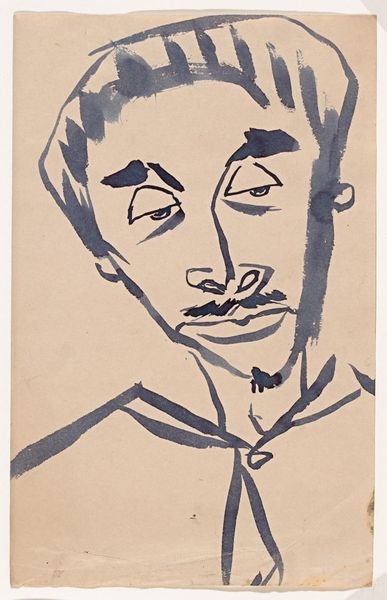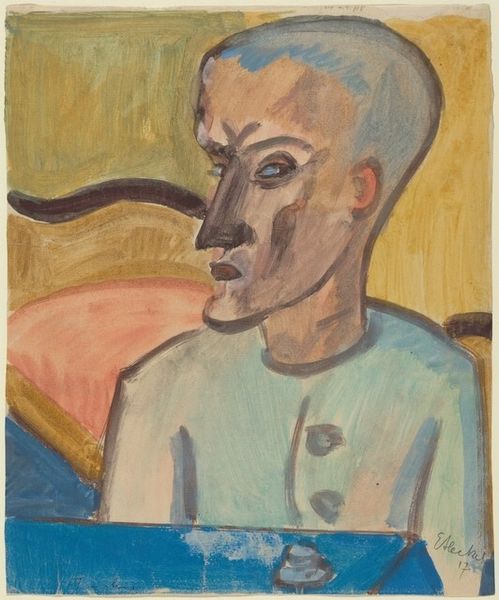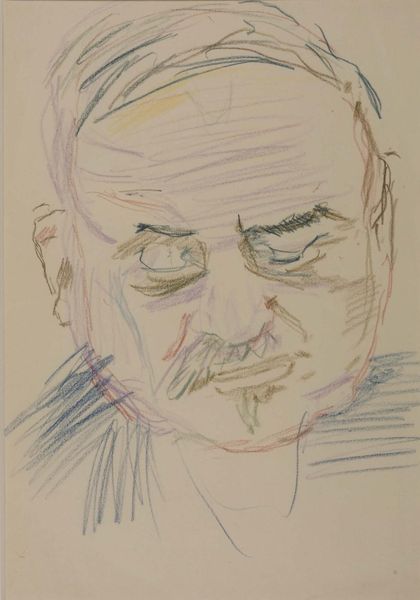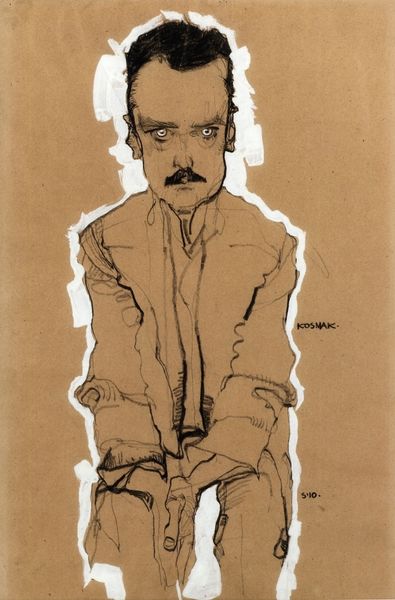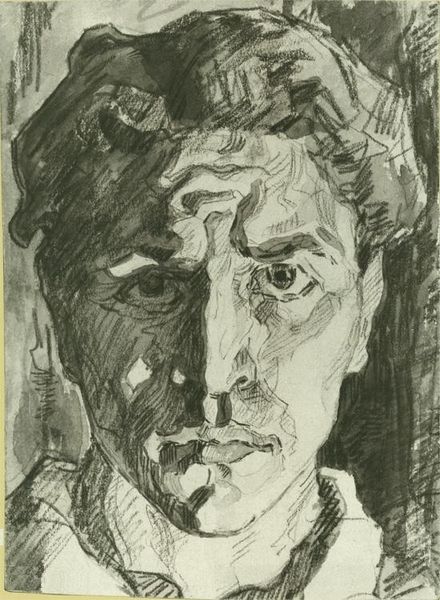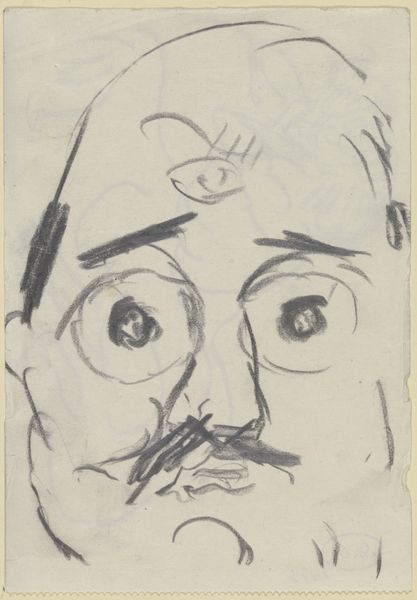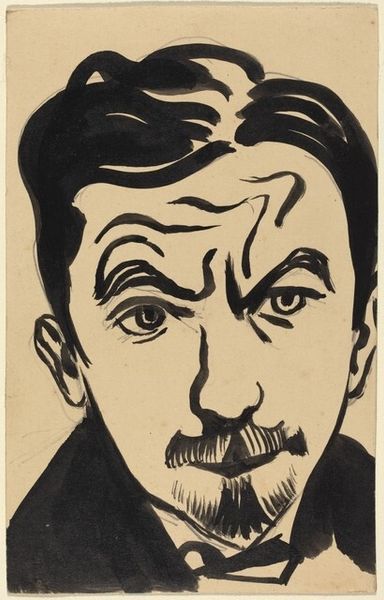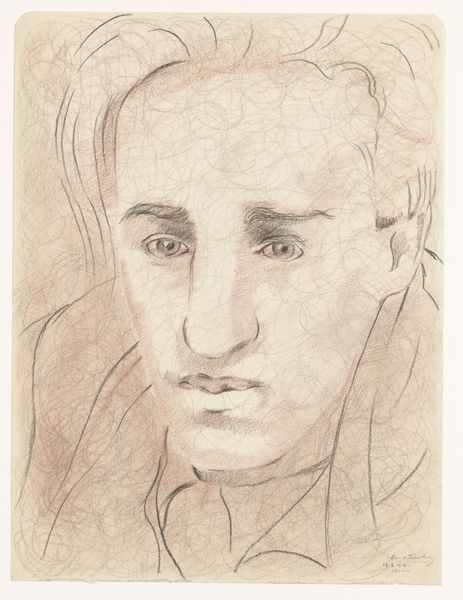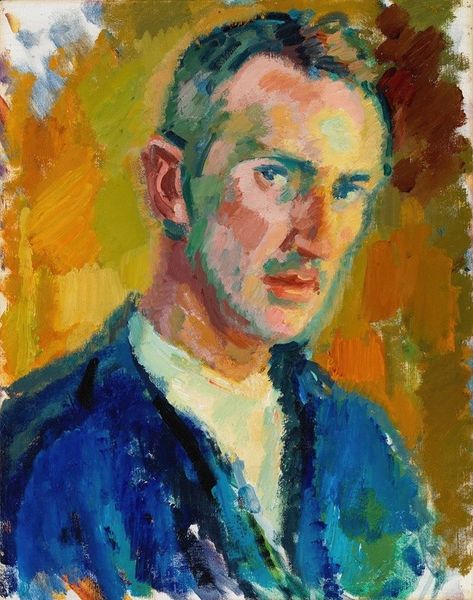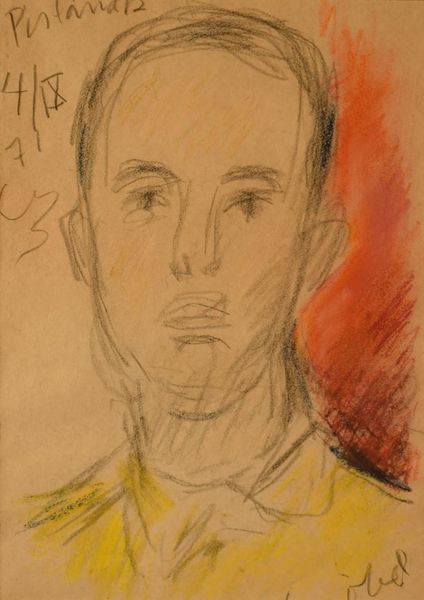
Copyright: Public domain
In 1936, Stanisław Ignacy Witkiewicz, or “Witkacy,” as he’s best known, rendered this pastel portrait of Mieczysław Gajewicz. Witkacy was working in Poland during a period of intense social and political change. He was deeply critical of the rise of mass society and the loss of individual expression. This portrait, with its distorted features and intense gaze, reflects Witkacy’s concept of “Pure Form,” an attempt to capture the psychological essence of the sitter beyond mere physical resemblance. The vibrant, clashing colors and exaggerated lines create a sense of unease, mirroring the artist's anxieties about the modern world. Witkacy's portraits often included coded information about the sitter's personality and the circumstances of the commission. His practice critiqued the traditional role of portraiture, challenging the institutions that upheld conventional artistic values. To understand Witkacy fully, we need to examine his writings, his involvement in the avant-garde theater, and the broader cultural context of interwar Poland. Only then can we appreciate the full scope of his artistic vision and its relevance to our own time.
Comments
No comments
Be the first to comment and join the conversation on the ultimate creative platform.
